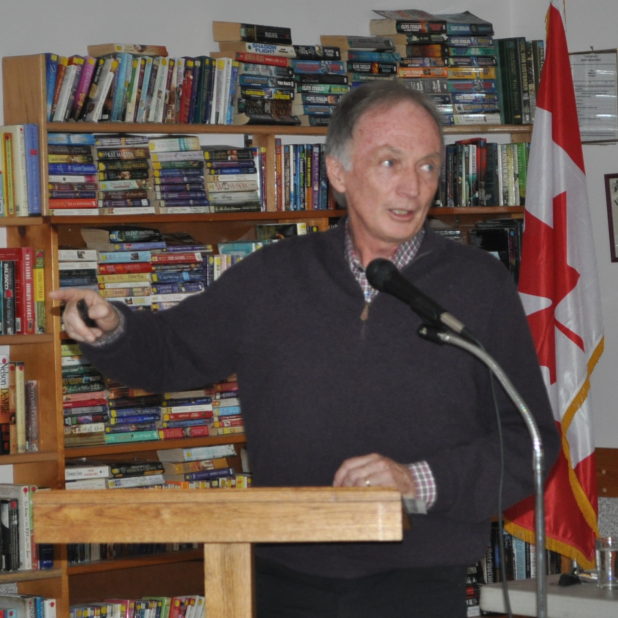Headline News
Bancroft targets tax cut
May 9, 2018

Bancroft Mayor Paul Jenkins leads community members through Bancroft’s finances. / SARAH SOBANSKI Staff
By Sarah Sobanski
Bancroft ratepayers can look forward to a three per cent decrease on their tax bills this year.
“That’s an average,” Mayor Paul Jenkins warned at Bancroft’s public budget presentation May 1 at Club 580. “Some will be more, some will be less.”
For the owner of a $142,000 property, the median assessment value in Bancroft, the municipal tax bill will cost $1,736.
That doesn’t mean the town is getting out of debt any faster, however. According to the presentation, the town’s debt sat at $6.3 million at the end of 2017.
It plans to bring that number just under $6 million by the end of 2018. The projected reduction of debt year over year gets to zero by 2041 — assuming no new debt is acquired.
Debt repayment cost the town nearly $500,000 in 2017 plus $236,000 in interest. Biggest contributors to the debt include the sewer plant where $3 million remains, Block 68 where more than $850,000 remain and unfunded capital where $818,000 remains.
Jenkins noted the town spent $75,000 in renovations to the Train Station — where town offices were moved last year. He said the debt accumulation was almost a 50/50 split between water and wastewater debt and administrative debt.
The town is still on the hunt to reduce flow to the treatment plant and decrease processing costs. CAO Hazel Lambe said 13 areas had been identified through camera imaging of the town’s water and sewer lines.
“They’ve been working every day to address the amount of flow,” said Lambe.
Public works manager Perry Kelly said flow meters were installed to target these areas last month. He said he planned to have a meeting with plant operators in the next few weeks after targeting the spring runoff.
Jenkins seemed pleased with Veolia, the company that took over the plant from the Ontario Clean Water Agency. He said they were identifying plant needs and keeping the town constantly updated.
Bancroft is currently servicing its debt at seven per cent, two per cent higher than recommended. That seven per cent comes directly out of the ratepayers’ tax dollars. The rest goes to town operations at 57 per cent, to the county at 17 per cent, to education at 12 per cent and to town capital at seven per cent.
The total 2018 budget is $10.35 million. Highest costs for the budget will come from transportation services or roads and utility services at $2.8 million apiece. They’re followed by general government at $2.1 million and policing services at $1.1 million.
Jenkins noted there is $15,000 set aside for Canada Day this year.
As for the future, Jenkins said the town has to be more competitive by decreasing its tax rate year over year.
“We know our tax bills are too high,” he said.
He said the town continues to lobby with the province for support and to argue it shouldn’t be weighted the same as rural municipalities as Bancroft’s costs are higher with all of the services it provides to its surrounding area.
“Don’t have the province as your landlord,” he said. “It doesn’t work very well.”
In order to continue reducing taxes, Jenkins said the plan is to reduce expenditures without cutting services, increase non-tax based revenues and increase overall development, both commercial and residential.
The budget will be up for approval at council’s next meeting, May 11.

















